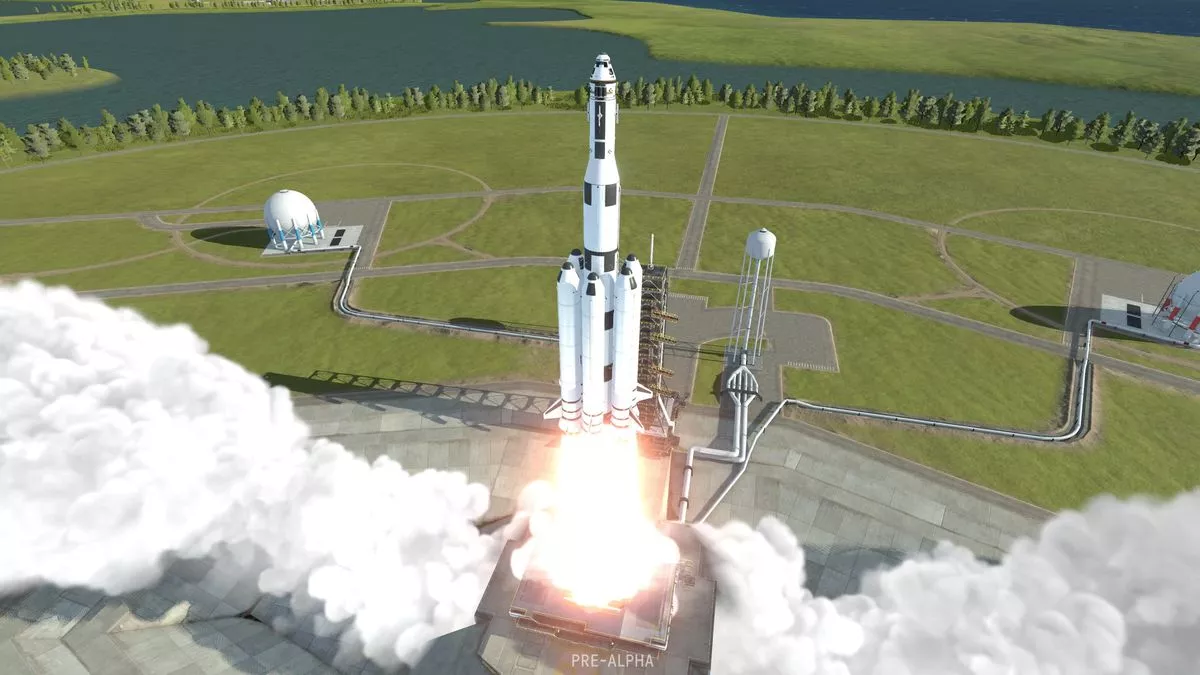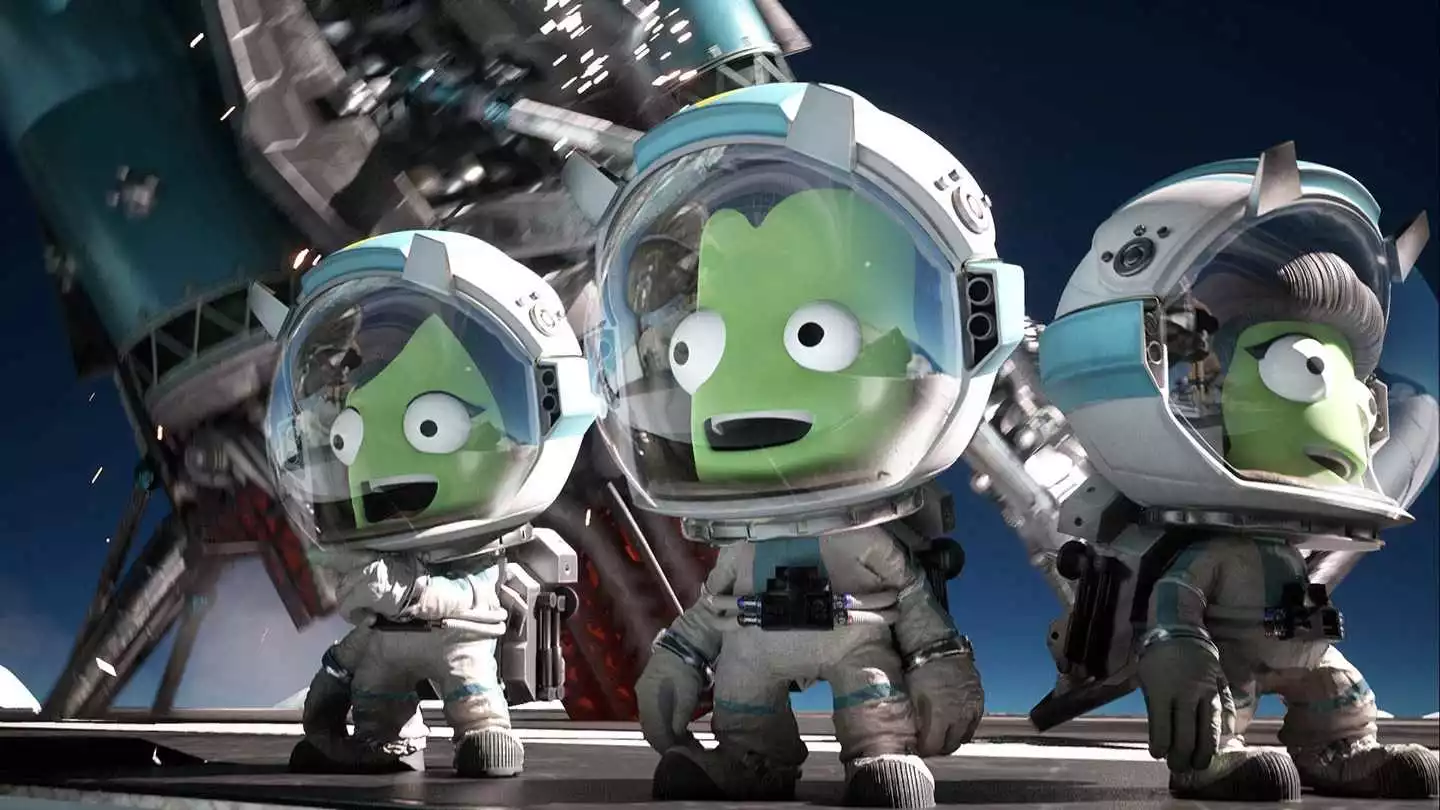Kerbal Space Program 2 has a cool new exploration mode that brings a lot of changes to the game. It’s easier to play with better graphics, and there are fun new things like seaplanes and submarines. They also added a cheat menu for those who like to play around. The game has missions where you can do things like deliver tourists to cool landmarks. Even if you’re not into missions, you can explore different planets. It’s a fun game with some cool updates. Here is the full Kerbal Space Program 2 roadmap.

Kerbal Space Program 2 was launched on February 24, 2023, for various platforms. You can play it on your personal computer or Microsoft Windows.
It’s a single-player game made by Intercept Games and Star Theory Games using the Unity game engine. The game is a mix of simulation, indie, and strategy, and you can try it out early.
Private Division and Take-Two Interactive are the companies putting it out there, so you know it’s going to be a cool space adventure on the platforms mentioned.
Kerbal Space Program 2 Update: Introducing the New Exploration Mode

The main thing they’ve added in Kerbal Space Program 2 for science is exploration mode. You can do all the usual stuff. Make sure you turn off cadet orientation. Otherwise, it tells you all the stuff that you’ve seen every time you played Kerbal Space Program 2. Exploration Mode is Science Mode in the original game. You can go to Mission Control, where you can find some new mission objectives. Now launch the Kerbal Space Program’s inaugural mission. You get the whole mission brief from Dr. Kerry Kerman.
The startup is very basic. The first objective is to get to space. Just go in and build your rocket. This objective is pretty easy because you get plenty of parts on startup. Some of the people in the dev channel and some of the hardcore Kerbal players, with some serious expertise, have been able to get all the way out to the most distant planets in the game and land. The big reason for this is that developers have dialed back the wobbly rocket factor a bit too much.
The basic first rocket gets us to orbit 3.6 km of Delta V, where I can skip through the first few missions. There aren’t a lot of changes to the in-flight UI; you still get the usual launch, the music, and the giant flame diverter that has no link to the size of the rocket. The frame rates are a whole lot better, but it’s still way more resource-intensive than its predecessor. Another thing that’s shining is the experiment button.
You can click on this button, and it will give you the previous science mode. You can collect crew observations and samples if you’re on the surface, and you can transmit them back for the rewards that they give you. The goal in exploration mode is to collect science so you can take it to the R&D lab and unlock it. More stuff, so you can build out your spacefaring capabilities in short order.
Streamlined Science: A Simplified Approach in the Kerbal Space Program’s Latest Update

If you loved reading the science reports in the Kerbal Space Program, then you’re going to be disappointed because there’s no flavor text. There is plenty of flavor text back in mission control, but that’s only for specific missions.
In general, everything is greatly simplified. There’s only a handful of experiments. There’s also no need to get out of the capsule to grab stuff; you don’t have to do unnecessary tasks in the upper atmosphere as you’re trying to maximize your science. It’s all like one button with minimal difficulty. It’s streamlined, but perhaps less engaging. It’s no worse than the original system. There are lots of commonalities. For example, there are data and samples. You can transmit data, but you cannot transmit samples. You have to return to the space center to submit samples. Transmitting back to the planet can cause you to lose units of electricity. But you can give updates to mission control about the samples.
Explore and create
After completing the mission, go and check out the R&D lab. You get a cute little animation of completion. There are some updates to the core physics simulation. There’s a lot of bugs that’ve been fixed. They’ve put buoyancy back in the game, which means you can have seaplanes, boats, or submarines once again. It’s a Kerbal Space Program 2 for science and space, but people like to build things that don’t go to space. And as you can imagine, seaplanes are so much faster than spaceships. Building seaplanes in these games can help people understand how planes fly.
There are some prepared missions, like delivering tourists to a specific landmark on the planet. This is ideal for aircraft because you can get them within walking distance, and then you just have to make sure that they are able to actually walk over. There is a bit of a problem in that it requires you to have a landercan rather than a plane cockpit. While the Landercan fits in line and behaves like a cockpit in every way, it’s not as robust as the other cockpits. Landing it in really rough terrain can be quite difficult.
You can use the cheat menu, which is now back in the game. For example, these cheats let you teleport and let you give yourself signs. Previously, you had infinite propellant. This technically doesn’t count as cheating because it’s not in the cheat menu. The game doesn’t penalize you for using the cheat menu. If you want to cheat, that’s fine. You are only cheating yourself because it is a single-player game. In the previous releases, there were many known points of interest around the Kerbal Space Program system.
Like strange statues, this golden arch with glowing spheres is now the destination for the missions. You start to get strange signals. You have to go and find these items. Landing on the specific spots requires some special skills. It doesn’t show up on the navigation display. Precision navigation is needed to land within walking distance. The missions are sort of optional bonus points. You don’t need to do them if you don’t feel like doing them. Instead, you can go to the various planets for research at your own pace. Indeed, you might have to do some science-oriented missions so you can get enough tech to go to the next big mission, because some of these missions get you very far.
Conclusion
In the last nine months or so, the development team has made improvements, perhaps not as fast as we would have liked. The game is still very much lagging behind the original. The main advantage it has over the stock game is better graphics. It needs more powerful hardware for better graphics.
It has cool music with good sound effects. It has a whole bunch of flavor text now, which tells you all about the Kerbals. At this point, if you’re interested in playing a spaceflight building game, then the original KSP 1 is still the best option for you. And if you want a realistic simulation of what it’s like to be inside the cockpit, then there’s Re-entry or Orbiter.









